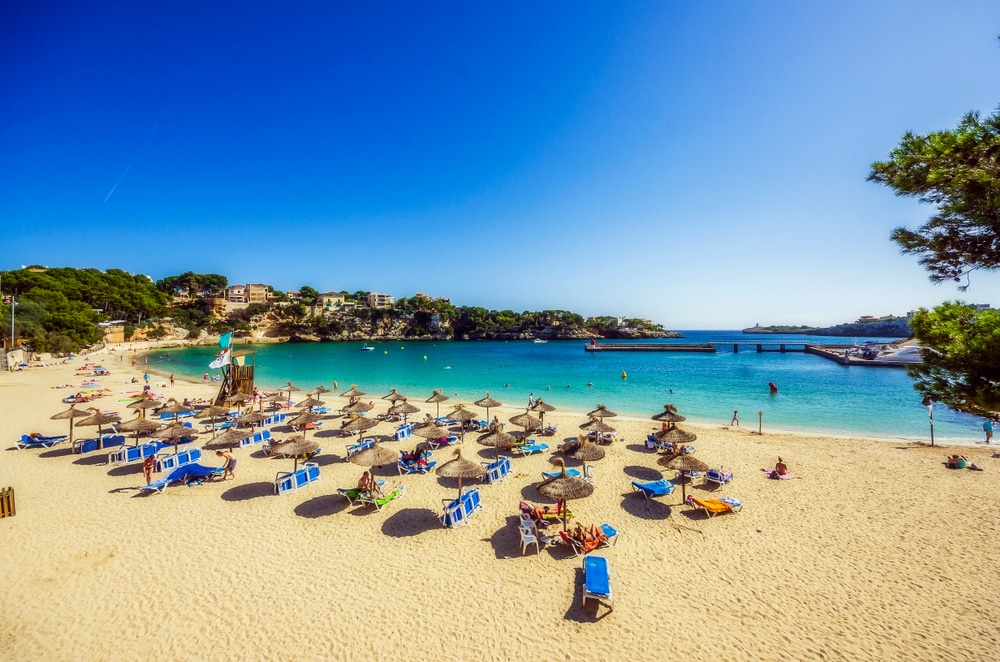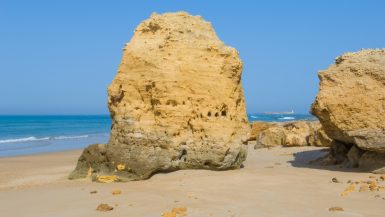The port city of Porto Cristo in the southeast of Mallorca has been visited by tourists for a long time. But while some places have found their way into the modern age, you can already feel the slightly antique romantic charm of the city on the next corner.
Old meets new
In Porto Cristo there is no border. Old Mediterranean houses stand next to modern buildings. Nevertheless, the townscape is characterized by the old town. The medieval town centre offers an abundance of historic buildings and the narrow streets between old stone houses exude their own charm.
The white villas that look out over the sea into the distance are also well-known.
Postage Cristo is a tranquil coastal town that is particularly appreciated by families and couples.
Once shaped by the sight of the fishermen, today only a few regularly go out to sea to fish. Nevertheless, there is always fresh fish.
Església Mare de Déu del Carme: Protection of fishermen and seafarers

The neo-Romanesque basilica in the centre of the village is dedicated to the patron saint of fishermen and sailors. In her honour, as in many other places on the Spanish coast, a procession and numerous events take place every year. The church was built in 1890 and has been expanded several times over the years. It received its current appearance in 1949, the year of its inauguration.
Torre de Cala Manacor
The watchtower on the east coast – also known as the Tower of the Falcon – was built in 1577. In 1985 it was placed under monument protection. Today it is the landmark of Porto Cristo and can be visited free of charge. The special feature of the tower is that its entrance is located at a height of four meters. Small steps at the foot of the tower seem to lead into the wall.
The Caves of Porto Cristo
Porto Cristo is surrounded by numerous caves. Among them are the Coves del Drac, the Caves of Drach. These are the most famous caves in Mallorca and are a popular destination for tourists. Basically, however, these are not individual caves, but a widely ramified cave system with several underground lakes, one of which can even be called the “largest underground lake in Europe”.
The stalactite cave system is largely accessible to visitors for independent visits. The attractions also include the musical performances inside the cave.
In addition to the Coves del Drac, the Coves dels Hams (Fishhook Caves) are also regularly visited by tourists. These stalactite caves are not as large as the dragon caves, but they are not as crowded. The leaders of the tours are well trained and have extensive knowledge. Each tour is also accompanied by some classical music.
The Coves Blanques – in German: the White Caves – are also worth a visit. Especially for visitors interested in history, they have a lot to offer. The Coves Blanques are located not far from the beach of Porto Cristo. These were already used by the people of the Talayotic culture in prehistoric times and still preserve their traces. Later in the Middle Ages, the caves functioned as a refuge, especially for fishermen and sailors. The first registered family in the village also lived in one of these caves in 1877.
The beaches of Porto Cristos
Playa de Porto Cristo
The beach of Porto Cristos is very family-friendly with a free water playground, is located in the sheltered bay of the village and is directly adjacent to the marina. Long and narrow, it lies right in front of a stone promenade and the east of the bay is dominated by a breathtaking rock face. There are also a few smaller caves along the rock face, which are good as a shady hiding place.
Beaches in the vicinity of Porto Cristo
The two beaches Cala Mendia and Cala Romàntica are also within easy reach. Both are embedded in idyllic surroundings and, like Playa de Porto Cristo, also score with good infrastructure and great family-friendliness.




